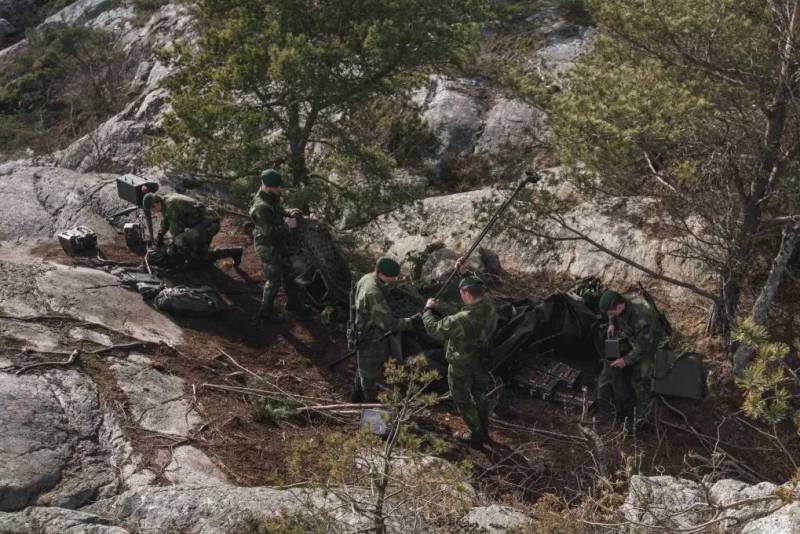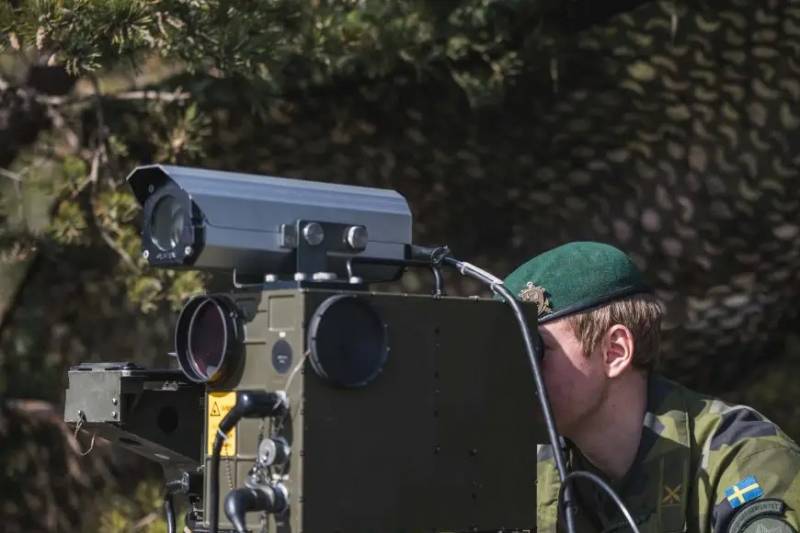Swedish anti-ship missiles RBS-17 for Ukraine
Recently it became known that Sweden is preparing another package of financial and military-technical assistance to Ukraine. It is again planned to transfer to the Ukrainian army a large number of various infantry weapons for a significant amount. At the same time, the proposal to supply a certain number of light coastal anti-ship missile systems RBS-17 is of the greatest interest. It is assumed that such products will strengthen the Ukrainian coastal defense, but the real effect of such weapons questionable.
Rockets in the third package
The third package of Swedish military-technical assistance to the Ukrainian army was announced in early June. The Swedish Ministry of Foreign Affairs, the Ministry of Defense and the Ministry of Finance of Sweden successively reported on the preparation of such a package, its composition and cost. So, this time it is proposed to transfer to Ukraine various weapons worth 262 million Swedish kronor (about 25 million euros).
According to the Swedish Ministry of Defense, the Ukrainian army has previously requested various weapons systems, incl. light coastal missile systems RBS-17. Stockholm has considered and granted this request, and is now preparing to ship the requested weapons.
It is reported that Ukraine will be given 17 complexes and a certain stock of guided missiles for them. All necessary items will be taken from the units and warehouses of the Swedish armed forces. It is not reported how the training of Ukrainian crews will be organized. The exact delivery dates are also not named - the Swedish side manages only with general formulations.
According to the Swedish Ministry of Defense, the Ukrainian army requested RBS-17 complexes to strengthen defense in the still controlled areas of the Black Sea coast. Earlier, for this purpose, Kyiv managed to beg British ground-based Brimstone missile systems and Danish systems with Harpoon missiles.
Probably, the Ukrainian army plans not only to deploy complexes of various types from different countries, but also to create a full-fledged unified coastal defense system on their basis. Whether it will be possible to do this, and what the real possibilities of such a system will be, is a big question. In addition, the potential contribution to the common cause of 17 Swedish complexes is not yet clear.
Foreign development
The RBS-17 coastal missile system is formally considered Swedish, but its development was carried out with the leading role of US industry. In addition, it was based on one of the American missiles.
In the early eighties, the Swedish army became interested in the American AGM-114 Hellfire guided missile, incl. in the context of coastal defense. In 1984, she issued a contract to Rockwell (USA) and Bofors (Sweden) for the processing of these weapons in order to create a light coastal missile system. A promising sample was designated as Robotsystem 17 or RBS-17.
Development work on the new complex was completed in 1987, and they were followed by a contract for mass production. The first complexes of a new type arrived in the part of coastal artillery in 1989. The needs of this type of troops were limited, and deliveries were completed already in 1991. All or almost all of the complexes manufactured then remain in service or put into reserve.
In the mid-nineties, RBS-17 production was restored to fulfill a single export contract. The first and last customer of this product was Norway. Its coastal artillery received several dozen launchers and a supply of missiles.
Ukraine will now become the second foreign operator of the RBS-17 complex. In the near future, she should receive 17 such products and an unnamed number of missiles. It cannot be ruled out that some of these complexes will become a trophy - and the list of their owners will be replenished, for example, with the DPR army.
Technical features
RBS-17 is a light missile system with supersonic ammunition. It is made stationary, but its small dimensions and weight allow it to be quickly transported from position to position and prepared for work. The complex is designed to detect and destroy surface targets of small displacement in the near zone. It is also possible to use on ground targets.

The Robotsystem 17 complex includes several main components. These are an optoelectronic observation, detection and illumination station, an operator console, a remotely controlled launcher and an anti-ship missile. Under the control of one OES, several launchers can operate, located nearby or spaced apart along the front for some distance. The means of the complex are interconnected by cables.
The IPS of the onshore complex is made in the form of a portable unit on a tripod, controlled by an operator. Optics provides observation and search for targets at a distance of at least 10-12 km. There is also a laser rangefinder-target designator for highlighting the attacked object.
The RBS-17 launcher is simple in design. A U-shaped swivel support with the possibility of horizontal aiming is placed on the cruciform base. A swinging guide for a rocket and part of the necessary equipment are suspended on it.
The rocket for the RBS-17 is a modified version of the serial AGM-114. It is distinguished by the use of a semi-active laser homing head, which requires target illumination. In addition, Bofors has developed a high-explosive fragmentation warhead with contact detonation or slowdown. Flight characteristics remained at the level of the Hellfire product. Firing range - up to 10 km.
The principle of operation of the Swedish complex is quite simple. With the help of any suitable transport, the means of the complex are delivered to the position and then deployed, taking into account the camouflage and safety of the calculation. Independently or by external target designation, the operator finds the target and aims a laser beam at it. Then a launch is made, and the rocket seeks to hit the highlighted target. At the same time, the accuracy and efficiency of shooting directly depends on the skill of the operator responsible for illuminating the target.
Minimal danger
The future delivery of the Swedish RBS-17 missile systems to Ukraine is of particular interest. It shows that the country, which previously supported neutrality in principle, is now ready to send not only light infantry weapons, but also more serious systems to "friends". At the same time, from a technical point of view, such assistance is highly questionable.
Robotsystem 17 is relatively easy to operate, deploy and use. In addition, it allows you to attack and hit targets of small displacement with sufficiently high accuracy. At the same time, the complex has a lot of a number of specific features that either limit its capabilities or even exclude effective use in certain situations.
First of all, the limitations are imposed by the architecture and method of deploying the complex. RBS-17 in a combat position can be detected by various reconnaissance means and knocked out before the first launches. A retaliatory strike against a position unmasked by a missile launch is also possible. In any case, the destruction of the launchers is practically guaranteed, and the crew is exposed to unacceptable risks.
A serious problem is the characteristics of the rocket. A range of 10 km is clearly insufficient for most combat missions. RBS-17 can cover only a specific section of the coast and a limited coastal area from attack. Remote targets remain safe. At the same time, a missile made on the basis of anti-tank ammunition is capable of hitting only boats and small ships. Larger targets after its impact should remain combat-ready - and the possibility of retaliation.
It should be recalled that recently Ukraine received a British coastal complex with Brimstone missiles. The latter were also created on the basis of the American product Hellfire and are close in their characteristics to the RBS-17. Thus, the Ukrainian army now has two unified missile systems of little use.
Notable Trends
The announced delivery of RBS-17 anti-ship systems as a whole differs little from most episodes of foreign military-technical assistance to Ukraine. The foreign army again provides old weapons with limited characteristics, and in small quantities. As a result, such "help" does not give a noticeable result.
However, due to such supplies, foreign states indicate their support for Ukraine and its main partner in the face of Washington. And besides, they are making room in their arsenals for the purchase of new weapons - and are preparing to master the increased military budgets. And support for the Kyiv regime is just a pretext for this.





Information